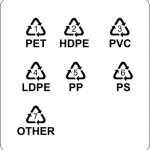When the FDA refers to traceability today they are talking about one back one forward reporting. Does this make our supply chain safer?
The definition of traceability according to Wikipedia refers to the completeness of the information about every step in a process chain. Traceability is the ability to verify the history, location, or application of an item by means of documented recorded identification.
When the FDA uses this term what they are referring to is the capability of bidirectional traceability or tracing products one step back one step forward. This means identifying the immediate supplier of the product and identifying the immediate recipient of the product, which is not the final retailer.
However the process also requires some level of common sense. I’m a man of faith, but blind faith really gets us no where when we are talking about food product traceability. GS1 has created a certification for traceability in cooperation with a number of organizations such as FMI, CIES and BASF.
From a common sense perspective one would believe that all products we consume are safe, that all produce and grain products are traced back to the seed level. Unfortunately this is not the case.
Let’s just examine milk products or byproducts. In a post from last year this author discussed a situation in China at the time where 13,000 babies were hospitalized and over 53,000 babies affected and that similar events could happen here. Well, yesterday we heard of HVP for the first time and the associated recall by the FDA. Traceability is really the only way that manufacturers and retailers and other members of the supply chain can maintain control of the ingredients in the products they produce or buy for resale.
As always we appreciate and look forward to your comments.



